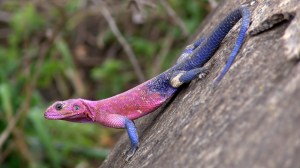Delayed milestone: Understanding torticollis in infants
Here is everything you need to know about torticollis in infants.
 Simple changes in positioning or performing stretching exercises at home usually lead to improvement in the condition. (Source: Freepik)
Simple changes in positioning or performing stretching exercises at home usually lead to improvement in the condition. (Source: Freepik)Written by Dr Gazala Khan
Torticollis is a condition characterised by a stiff neck that causes difficulty or pain when turning the head. In older children and adults, it can occur after sleeping in an awkward position. Babies may also be born with a stiff neck, but this type of torticollis is different and typically not painful. Congenital muscular torticollis is the specific type that affects infants, and most do not experience any discomfort from it. Simple changes in positioning or performing stretching exercises at home usually lead to improvement in the condition.
The cause of infant torticollis is not fully understood by doctors. It may occur due to the baby being cramped inside the uterus or being in an unusual position, such as the breech position where the baby’s buttocks face the birth canal. These situations can exert pressure on a baby’s sternocleidomastoid (SCM) muscle, a large muscle that runs on both sides of the neck from the back of the ears to the collarbone. Increased pressure on one side of the SCM can cause it to tighten, making it difficult for a baby to turn their neck. Signs and symptoms of infant torticollis typically manifest when babies are around 3-4 weeks old, including tilting their head in one direction (which may be difficult to notice in very young infants), having difficulty fully turning their head to follow you, experiencing breastfeeding challenges on one side (or preferring one breast only), and exerting extra effort to turn toward you during activities.
The symptoms
Torticollis in infants can lead to the development of a flat spot on the head, known as positional plagiocephaly, due to prolonged lying in one direction. This may also result in unevenness in the neck, jaw, and face, as well as the formation of a small lump or knot in the neck muscles. However, these symptoms typically resolve as the torticollis improves. Diagnosis of infant torticollis involves a physical examination by a doctor to assess the range of motion of the baby’s head. Treatment for infant torticollis may involve learning neck stretching exercises from the doctor to perform at home. These exercises aim to loosen the tight sternocleidomastoid (SCM) muscle and strengthen its weaker counterpart on the other side, which is underutilized. In some cases, the physical therapist may be recommended for additional treatment. Following initiation of treatment, regular follow-up appointments with the doctor every 2-4 weeks are typically scheduled to monitor improvement in torticollis symptoms.
Here are some tips for helping your baby develop strong neck muscles at home
• Encourage your baby to turn their head in both directions, as this can help to relax tense neck muscles and strengthen the weaker ones.
• When it’s time for your baby to eat, try offering the bottle or breast in a way that encourages them to turn away from their preferred side.
• When putting your baby down for sleep, position them to face the wall. Since babies usually prefer looking out into the room, they will naturally turn away from the wall, which can help stretch the tight neck muscles.
• Always remember to place babies on their backs when putting them down to sleep to reduce the risk of SIDS (sudden infant death syndrome).
• During playtime, use toys and sounds to capture your baby’s attention and encourage them to turn in both directions.
• Placing your baby on their tummy for short periods while they’re awake, also known as tummy time, is a valuable activity. This practice aids in the development of neck and shoulder muscles and prepares your baby for the crawling stage.
(Dr Gazala Khan is a lactation consultant at Motherhood Hospitals, Lullanagar, Pune)



- 01
- 02
- 03
- 04
- 05




























